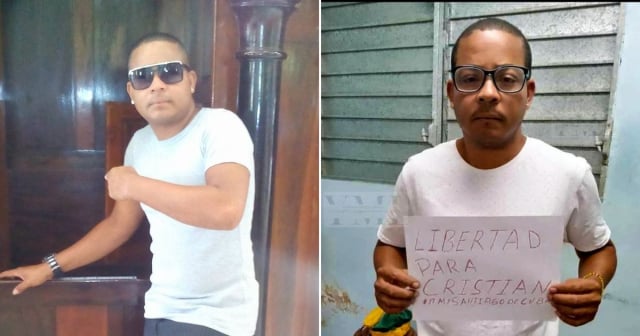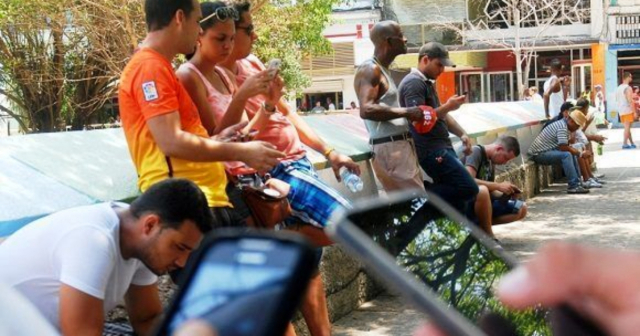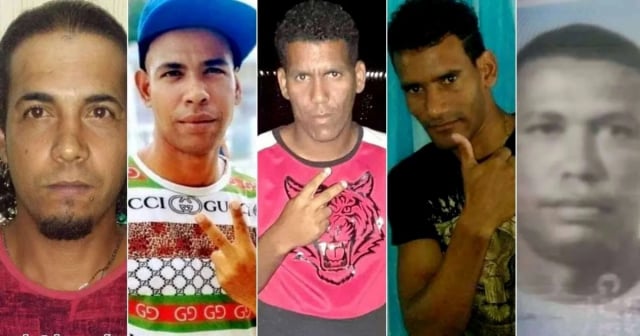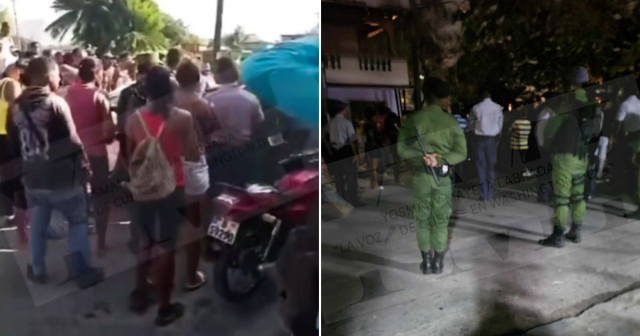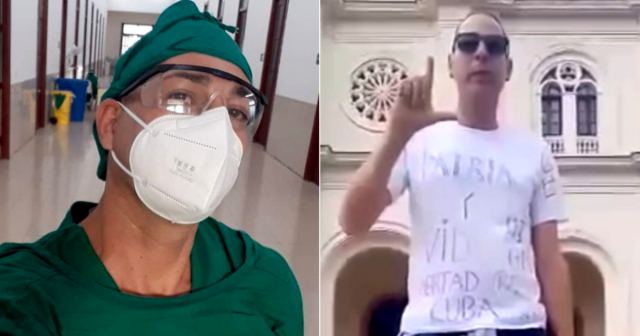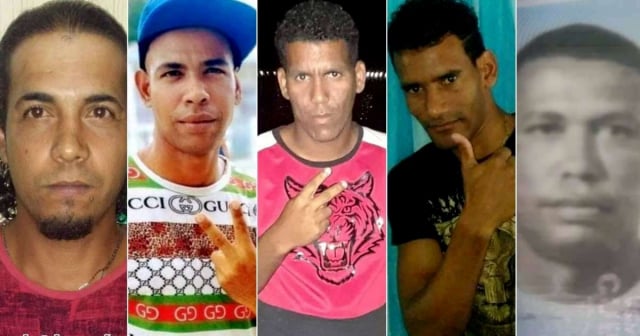The widespread social unrest that sweeps the IslandThis Sunday, March 17 (17M) provoked a day of protests against the Cuban regime and its disastrous management of the economic, political and social crisis that plunges the population into misery and despair.
The explosion took place in the city of Santiago de Cuba, in the east of the country, when in the afternoon residents of the Reparto Veguita de GaloThey took to the streets to protest the lack of electricity and food shortages.
Protest in Santiago de Cuba
Shouting “current and food,” hundreds of Cubans gathered in the vicinity of 9th Street in Veguita de Galo and the central Avenida de Carretera del Morro. In broad sunlight and in front of dozens of police and repressors dressed in civilian clothes, the people of Santiago expressed their exhaustion with the situation andThey expressed their desire for change shouting “Homeland and Life”.
The independent journalistYosmany Mayeta Labrada He was one of the first to report on the 17M protests. “The people have taken to the streets of Santiago de Cuba and have launched themselves to demand an end to the blackouts and many other problems that are affecting the population of Santiago de Cuba,” said the communicator on the social network.Facebook.
A video shared by Mayeta Labrada showed a crowd demonstrating in the streets against the government's management of the crisis.Miguel Diaz-Canel. Shouts of “current and food” and “Homeland and Life” were chanted by the protesters.
The events immediately recalled the outbreak ofthe historic protests of July 11, 2021 (11J), when thousands of Cubans took to the streets of towns and cities in the country, also shouting“Homeland and Life”, a phrase inspired by a protest song of the same name and that completely changes the meaning of the Cuban regime's motto of “Homeland or Death.”
Immediately the alarms were activated in the Palace of the Revolution and in the streets of Santiago, but also in other towns in Cuba, they began to seedeployments of police and special forces of the Ministry of the Interior (MININT) and the army, such as the so-called “red berets” and “black wasps.”
Barely an hour had passed sinceCyberCubareported the first protest of March 17, when strong police operations began to be reported on social networks to contain the outbreak that occurred in Santiago de Cuba.
Internet outages during protests in Cuba this Sunday
Not even two hours had passed since the initial reports of protests in the Veguita de Galo neighborhood, whenCuban users began to report cuts in internet services.
While in some locations in the country connection problems were reported, in others the Cuban state monopoly on telecommunications (ETECSA, belonging to the business-military conglomerate ofGAESA) chose to completely interrupt the internet service, similar to what happened after the 11J protests, but more effectively after that experience.
User reports indicated that in some areas of the eastern city it was impossible to connect to mobile internet, while some users were able to do so with difficulty from home, through the Nauta service and using some type of VPN.
In other cities in Cuba, such as Sancti Spíritus, Holguín and Pinar del Río, problems such as slowness in accessing social networks were also reported.
"We are Hungry": The cry of Cubans to the regime
Authorities of theCommunist Party of Cuba (PCC) and the government in Santiago de Cuba standing on the roof of a house in Veguita del GaloThey tried to calm the protesters' spirits.
However, far from achieving this, they increased their cries of protest in the presence of the police.“We are hungry, we are hungry”dozens of people shouted as recorded in videos where women, men, young people, the elderly and children were seen shouting without fear at the MININT repressors.
The atmosphere heated up to the point that the words ofBeatriz Johnson Distance, the top leader of the PCC in Santiago de Cuba who was on the roof along with other authorities, could not appease the popular discontent.
Shouting “We don't want a tooth”, the people of Santiago interrupted their speech. In another video shared on social networks, Jhonson Urrutia was seen on the street, surrounded by the crowd that chanted to applause: “We want food!”
Minutes later, the networks shared images of the“miraculous” arrival of trucks loaded with food in Santiago de Cuba. Mayeta Labrada reported the presence of a harrow loaded with rice and a milk cart in the Carretera del Morro and Gasómetro warehouse.
Cuban government blames the United States Blockade for the protests
Concerned by the events, the Havana regime spoke out through the Cuban vice-chancellorCarlos Fernández de Cossío, who blamed the United States for a new “attempt to destabilize Cuba.”
“Taking advantage of the critical situation that six decades of economic blockade helps create to incite violence, social unrest and disrupt peace.An open act of aggression straight out of the textbooks of imperialism", wrote Fernández de Cossío in X, (former Twitter).
Four hours after her first reports, Mayeta Labrada indicated that she continued to receive “videos from the thermometer of popular discontent on Calle 9 de Veguita de Galo and Carretera del Morro,” whereThe protesters also shouted “down with communism”.
Protests in Bayamo
The determination of the people of Santiago began to light up networks throughout Cuba and among Cubans in exile.In Bayamo, dozens of Cubans took to the streets despite the presence of the “black wasps”, who closed several streets as a preliminary step to the repression against the protesters.
JournalistMario J. Penton published images of the city with a military presence and stated that the internet service was still affected.
“Several people have expressed their dissatisfaction with the situation of electrical service and food distribution.This context is attempted to be taken advantage of by the enemies of the Revolution, for destabilizing purposes.”, declared Díaz-Canel hours after the outbreak, using his social networks to point out alleged “terrorists based in the US.” as the virtual agitators of the protests.
For its part, through its embassy on the island, the United States urged the government to respect the human rights of the protesters and Cubans in general.
“We are aware of reports of peaceful protests in Santiago, Bayamo, Granma and other places in Cuba, with citizens protesting the lack of food and electricity.We urge the Cuban government to respect the human rights of protesters and address the legitimate needs of the Cuban people", indicated the American Embassy.
Repressive actions by the government during the protests in Bayamo
The situation became heated until, finally,The Cuban regime unleashed repression against protesters in the streets of Bayamo. Images spread on social networks showed police beating and arresting several citizens who were running to avoid being arrested.
Night was falling on the Island and the protest was still alive in Bayamo, whereHundreds of neighbors sang the National Anthem lighting themselves with cell phones in their peaceful march through the streets of the city, while the cries for freedom were clearly heard, as confirmed by a video broadcast on social networks in which the parade can be seen advancing in the darkness of a blackout. .
At that time, 17M was already a reality exposed in the world's media and latent in the social networks of Cubans, with statements by artists and personalities supporting the protests.
Demonstrations in Cárdenas, Matanzas
The spark that jumped in eastern Cuba spread to other locations in the country. It's already dark at night,The people of Cárdenas, in Matanzas, took to the streets to protest with banging pots and pans. An Internet user shared on Facebook images of the residents of Santa Martha walking through the streets in the middle of a blackout, banging their pots and pans. In his video, many young people and even mothers with children in their arms were seen.
Returning to the eastern region, the attention of the networks focused shortly after on the Cubans who,From the town of El Cobre in Santiago de Cuba, they joined the massive demonstrations of 17M shouting “No to Violence”.
Other recent protests in Cuba
In the last days,CyberCubahas been reporting small protests in other areas of the country.
In the municipality of San Antonio de los Baños (Artemisa), or Cacocum (Holguín), several peopleThey took to the streets ringing cauldrons in protest of the electricity service cuts..
The daily notices of theElectrical Union of Cuba (UNE) that warn of massive blackouts throughout Cubafurther catalyze discontent with which the population is already burdened due to the economic scarcity that the country is going through.
What do you think?
SEE COMMENTS (17)Filed in:

